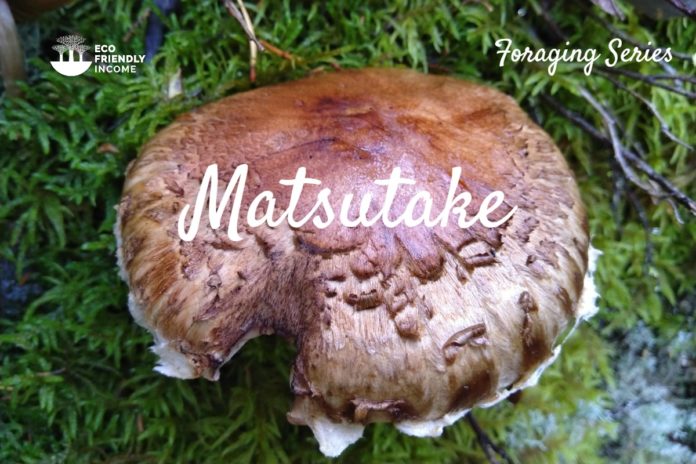These are among the most sought-after mushrooms you can forage in the wild. Although learning how to identify Matsutake mushrooms is not always easy. There are some lookalikes that can confuse you.
I’ve been a tree planter for many years now, and I’ve had the opportunity to see Matsutake mushrooms numerous times. At first, you’re not always 100% sure that’s what they are but with experience, you’ll be confident every time you see them.
They have an interesting flavor and frankly, an amazing scent, kind of like a mix of spice and pine.
I think any mushroom lover should go hunt for them, so I decided to share my knowledge and teach you how to identify Matsutake mushrooms.
In this guide, you can expect to learn the following:
- The Matsutake Mushroom Picking Season
- How to Identify Matsutake Mushrooms
- Where Matsutake Mushrooms are Found
- What Matsutake Mushrooms Taste Like
- How to Store, Clean and Cook Matsutake
Let’s get started!
The Matsutake Mushroom Picking Season
Matsutake, Tricholoma magnivelare or murrillianum have a late picking season. They usually fruit from the end of August to late October, sometimes past that, depending on the weather.

Although keep in mind that microclimates in your area affect the fruiting season, for example, you could find them earlier or later than that.
Factors like rainfall and weather affect when Matsutake mushrooms start to fruit. A good week of rain is always beneficial for any mushroom to spawn.
But the most considerable indicator that Matsutake are growing is the forest floor.
Matsutake mushrooms grow in pine stands, usually spawning under piles of pine needles or moss. Areas thick with pine needles are good spots to check.
How to Identify Matsutake Mushrooms
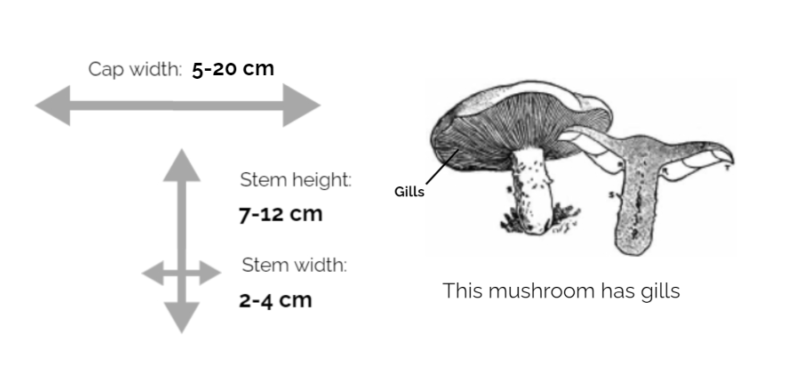
There are two varieties of true Matsutake found in North America, the difference is by their geographical range.
- Tricholoma magnivelare: On the east side of the Rockies.
- Tricholoma murrillianum: On the west side of the Rockies.
Eastern Matsutake (Tricholoma magnivelare)
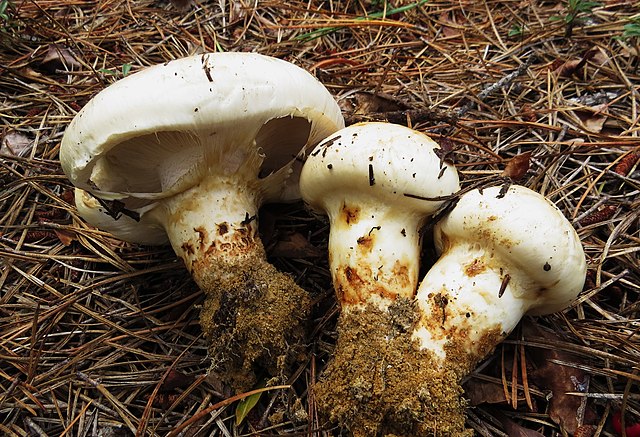
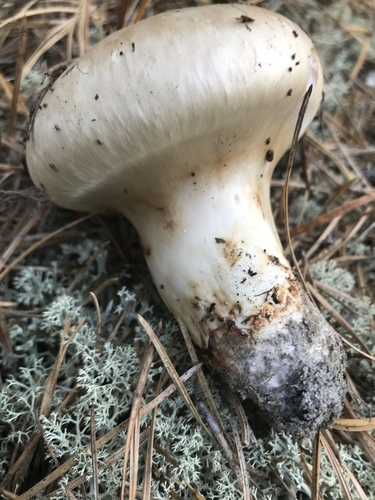
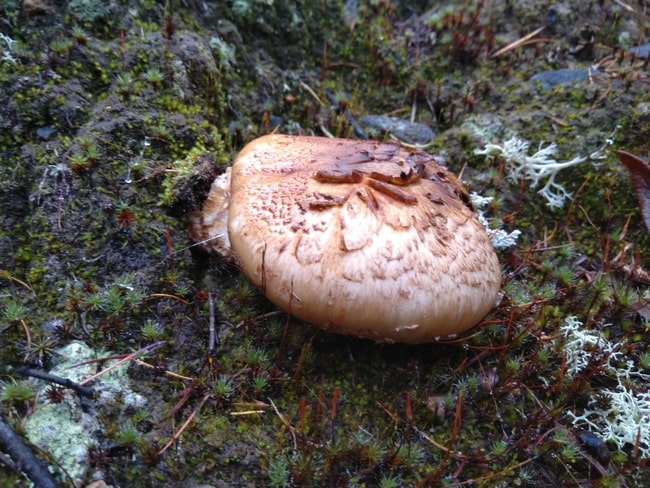
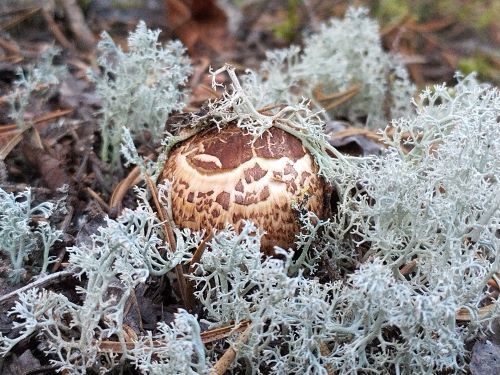
Western Matsutake (Tricholoma murrillianum)
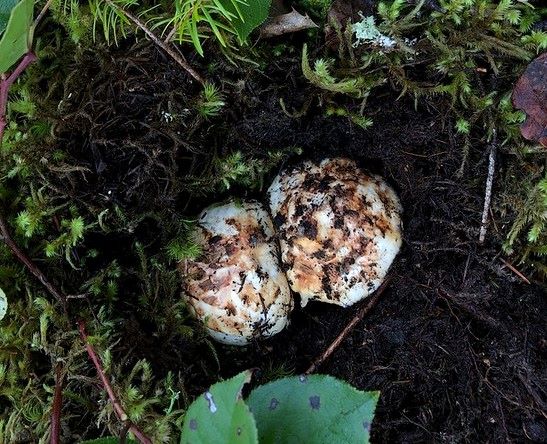
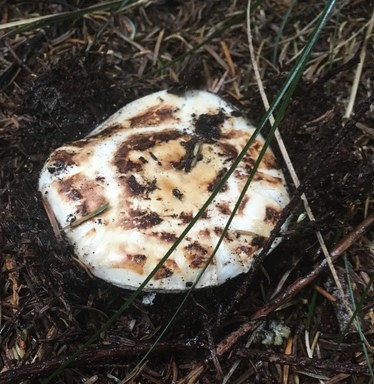
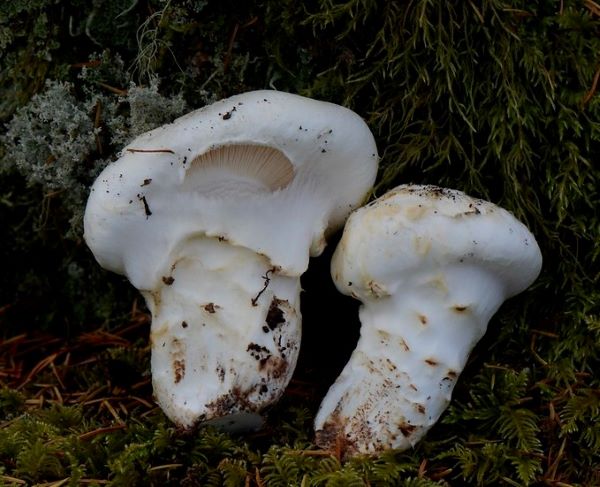
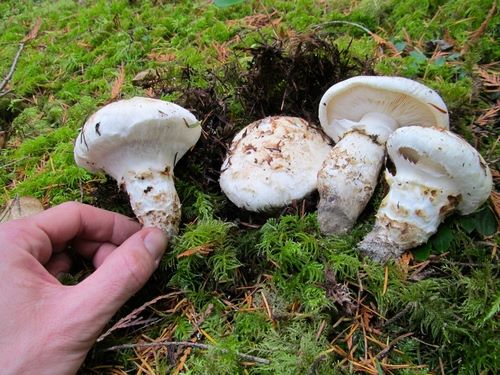
Matsutake Characteristics
Matsutake mushrooms have very sturdy thick stems, which are almost always hidden under the soil. The colors of the stem and cap range from a clear white to flaky brown.
Younger matsutake mushrooms have a veil going from the stem to the cap, while older Matsutake mushrooms lose their veils to reveal fine white gills underneath. The caps will usually grow into a round to egg-like shape.
Matsutake can grow as wide as 20cm, and the underground stems can measure up to 12cm long. Mature mushrooms have cap edges that curl inward, not outward.
If you were to cut a Matsutake into two pieces, you would see the clear white flesh inside. Additionally, when you split matsutake stems apart, they break into a string-like texture.
Where Matsutake Mushrooms are Found
American Matsutake mushrooms are quite elusive, and their identification closely relies on the location you find them.
Now if you want to find Matsutake, it’s good to know they prefer to grow in sandy soils. Not every forest has sandy soil for a base so if the spot you’re at isn’t sandy, you probably won’t find them there.
The majority of Matsutake are spotted mostly buried under the soil, with only the cap showing. They can be hidden under moss or piles of pine needles.
Look for a hump around trees, a pile of pine needles slightly lifted from the soil is a tale-tale sign that matsutake is under it.
Matsutake mushrooms are also called ‘pine mushrooms‘ because of their symbiotic relationship with pine trees, especially jackpine.
Sandy pine tree stands are prime spots for matsutake hunting. They won’t necessarily be right underneath the pines, they can also spawn underneath spruce and fir in those mixed pine stands.
If you find a mushroom that looks like matsutake, ask yourself this: Is it growing in a pine tree stand? Is this area’s soil mostly sandy?
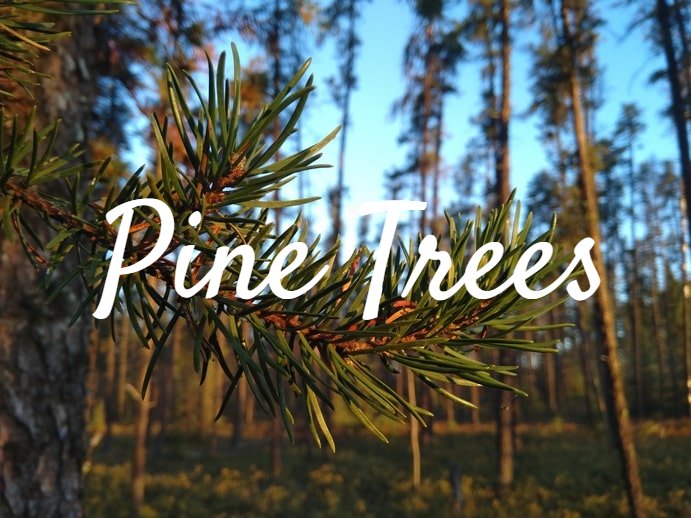
How identify pine trees? Here’s a list of common north american pine trees:
Pick Sustainably
Matsutake mushrooms are special, they are mycorhizal which means they have a symbiotic relationship with trees. Picking them in excess will really damage a forest ecosystem.
Note: Always leave some in every patch you find to let the spores propagate.
Matsutake Lookalikes
There are some matsutake lookalikes, here are a few of the most likely you are to encounter.
There are non-Tricholoma that look similar to a matsutake, and also some Tricholoma species that are very close to matsutake that you should avoid.
Let’s look at how you can tell them apart:
Matsutake Lookalike 1: Swollen-stalked Cat (Catathelasma ventricosum)
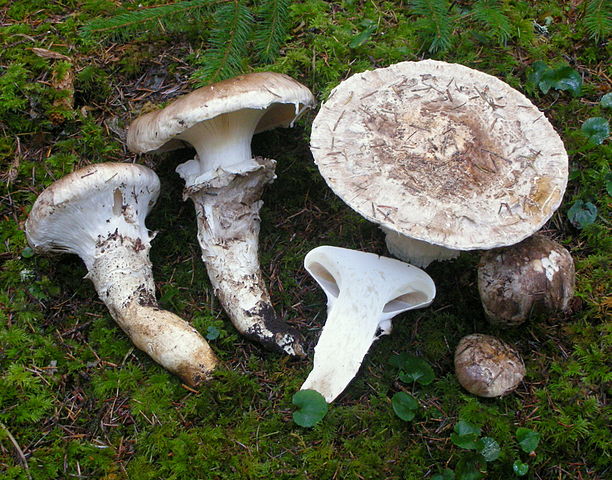
Photo by Ron Pastorino / CC SA by 3.0
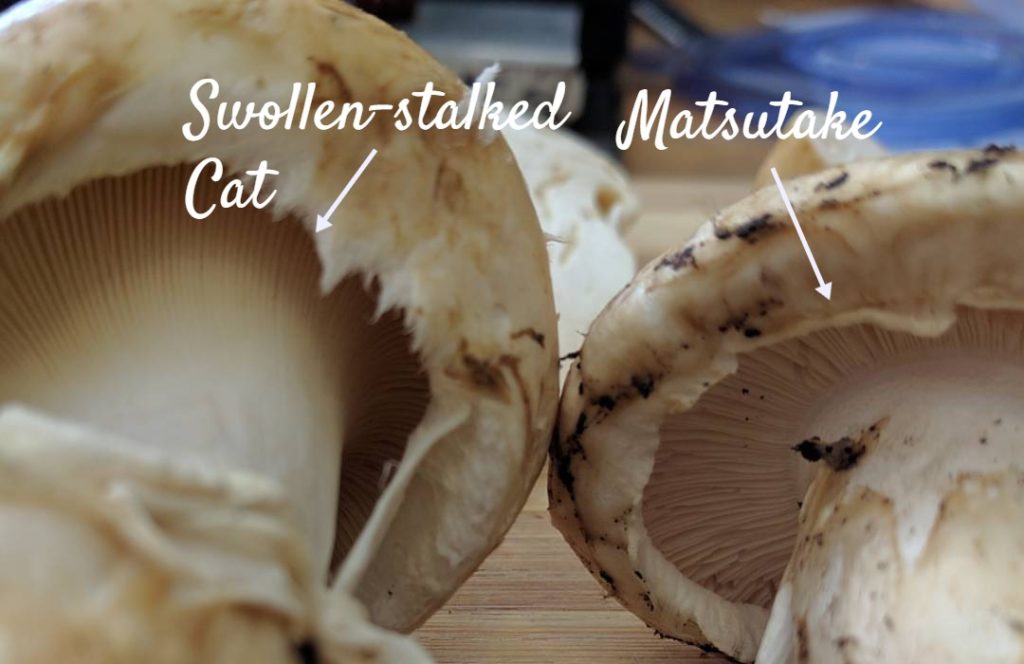
Matsutake and Swollen-stalked cat can grow in the same area, which makes them easy to confuse. There are some things you can look at to tell them apart though:
- Gills: Matsutake gills stop abruptly at the stem, but swollen-stalked cat gills run down the stem, as seen in the photo above.
- Smell: Matsutake mushrooms have a distinct smell, a sort of spice with a bit of pungyness.
- Firmness: Not many mushrooms are as firm as matsutake, you wouldn’t be able to crush the stem of a matsutake easily with your fingers.
Swollen-stalked cat are not poisonous though, they are perfectly edible but the flavor isn’t as good as matsutake.
Matsutake Lookalike 2: Smith’s Amanita (Amanita smithiana)
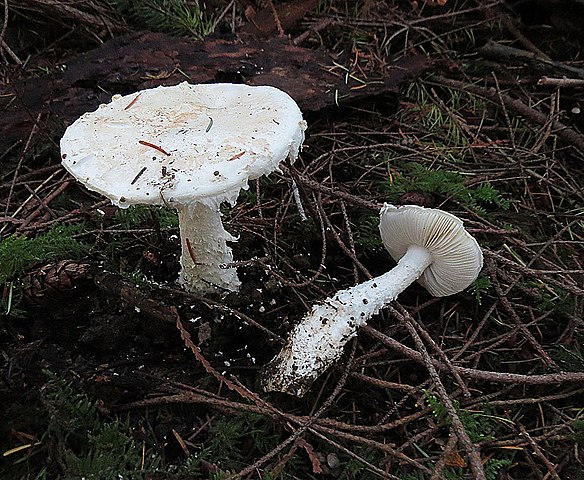
Photo by Dick Culbert / CC BY 2.0
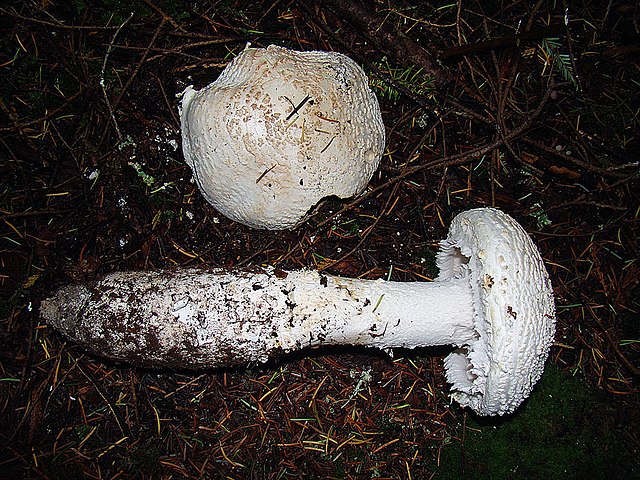
Photo by Dick Culbert / CC BY 2.0
To the untrained eye, one could also mistake Smith’s amanita for Matsutake. It’s important not to mistake them because Amanita smithiana are toxic and will destroy your liver! Here’s how you can tell them apart:
- Stems: Smith’s amanita stems aren’t as sturdy as matsutake, they will shatter if you put enough pressure on them. Matsutake stems break into stringy strips while amanita doesn’t.
- Width: Matsutake stems are usually widest just under the cap and gills, while amanita is widest at ground level.
- Veil: The veil under the matsutake gills is more like a membrane while Smith’s amanita veil is powdery and breaks into small pieces.
Matsutake Lookalike 3: Fetid Tricholoma (Tricholoma focale)
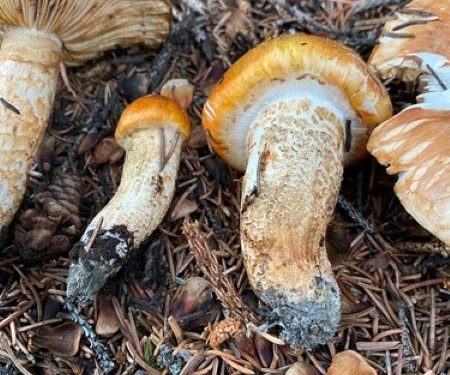
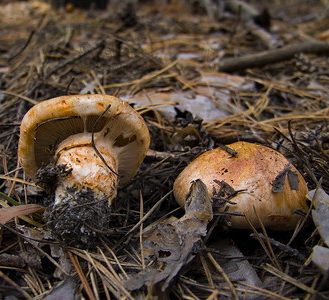
This one is very hard to differentiate because they are in the same family, but there are some factors:
- Cap Color: Matstuke caps are often white, or have a darker, flakier brown color while fetid tricholoma’s cap is a lighter brown and flakes less.
- Taste: If you’re not sure, always do a small taste test. Fetid Tricholoma gets its name from its extremely bitter taste. You’ll know if you taste one of these.
Matsutake Lookalike 4: European Matsutake (Tricholoma caligatum)
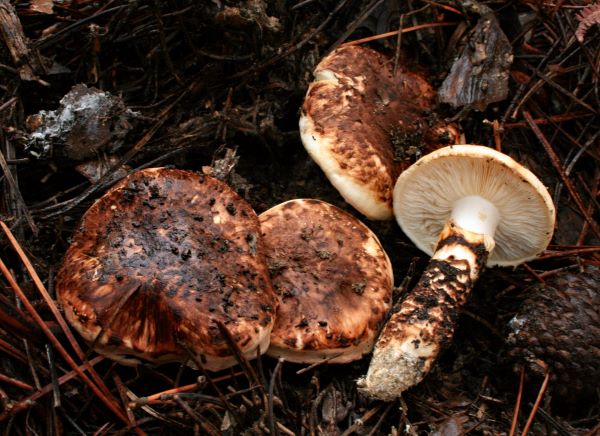
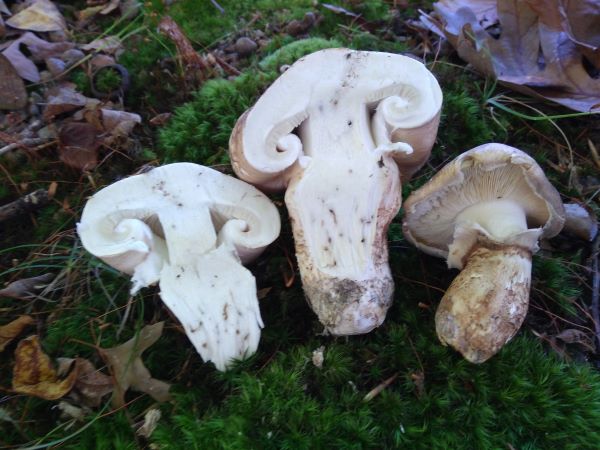
Another very close one to true matsutake, Tricholoma caligatum can still be told apart if looked at closely.
- Location: They usually associate with deciduous trees, as opposed to matsutake which associates with pine. Tricholoma caligatum is mostly found in oak and mixed hardwood forests.
- Stem: Tricholoma caligatum likes to make a frilled stem, if you look at the second picture, you’ll see where the veil broke off from the cap, there is a sort of frill that’s less common in matsutake.
- Smell: Matsutake has a strong spicy, spice-like smell that amplifies when put in a paper bag. Tricholoma caligatum isn’t very fragrant.
- Heft: Tricholoma caligatum isn’t as hefty, weight-wise, as true matsutake, which feels heavy for its size.
- Color: While matsutake can be brown, Tricholoma caligatum usually has a darker brown color, almost like burnt toast.
This one is still edible, while less flavorful, and sometimes bitter.
What Matsutake Mushrooms Taste Like
When freshly picked and cooked, matsutake flavor is hard to describe, I would say it’s somewhat nutty. It’s unique on its own which means you really need to taste it yourself.
The best part about matsutake is the aroma, they really add fragrance to dishes. Fresh matsutake mushrooms are much tastier than store-bought ones.
How to Store, Clean & Cook Matsutake Mushrooms
How to Store Freshly Picked Matsutake
Storing Matsutake mushrooms correctly is important to keep them in good condition. You never want to store them in a sealed plastic bag or container.
The best option is a brown paper bag or a container with a clean towel over it. Doing this will ensure you control the moisture and prevent any molds from growing.
Place in a dark, cool place until ready to cook.
How to Clean Matsutake
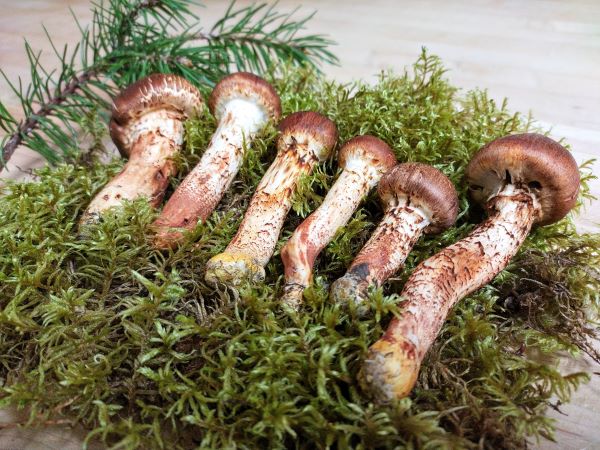
Before you can eat them, you need to clean the mushrooms. As a general rule of thumb, not just with Matsutake but any other mushroom, you don’t want to run water on them.
If you take your mushrooms to the sink and clean them in running water, they will absorb water and puff up. The true flavor of the Matsutake will be much milder.
What you want to do is take a clean hand cloth and gently rub off any dirt from the Matsutake. A clean little brush is also handy to get into the cracks. That’s really all you need to do, they will cook much better if they’re not wet.
How to Cook Matsutake
Where I work, we live in camps in the northern boreal forests. This far away from civilization means we have to cook all our food ourselves. But thankfully, there are some wonderful cooks that work with us, and they’ve taught me the secrets to cooking Matsutake to perfection.
Here’s what you want to do:
- Step 1: Heat up some oil in a pan until it’s quite hot, but not so hot that it smokes (canola or olive oil)
- Step 2: Place the sliced mushrooms in the pan and let them fry until they get golden, flip on the other side.
- Step 3: When this is done, add in some chopped shallots and toss.
- Step 4: Finally, deglaze the pan with white wine and lower the heat, simmer for a bit.
- Step 5: That’s it! By now it should smell delicious, the final touch is to add a bit of butter with salt + pepper. Enjoy!
Conclusion
That’s it! That should have covered everything you need to know to find Matsutake yourself to enjoy these wonderful mushrooms.
But if you have additional questions, write them down below and I will do my best to answer!
Happy hunting!
Interested in medicinal plants? Learn about medicinal plants you can forage in our guide.

